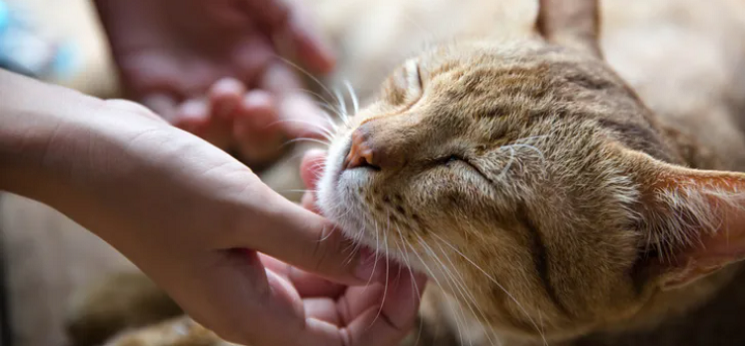When we are sad, stressed, scared, or wondering how we can possibly deal with whatever life has thrown our way, animals tend to have the ability to make us feel better.
Companion animals have played an important role in our society ever since we domesticated cats and dogs. We know the closeness and completeness of these relationships are extremely fulfilling – perhaps, for some people, even more so than human relationships.
So, we’ve known for a while that owning a pet hosts many mental and physical benefits. Now, a new study published by the University of South Australia has identified the lifesaving role that pets have played in 2020.
Amidst lockdowns, social isolation and job losses, basic human-to-human contact dwindled dramatically in day-to-day life. Luckily, in millions of households, animals have stepped in to fill that role and provide much-needed comfort with cuddles, pats and a constant physical presence.
The study
The Journal of Behavioural Economics for Policy paper outlines how pets have a crucial role to play in an era where human-human contact is a health risk.
Lead author Dr Janette Young says physical touch is a sense that has been taken for granted – even overlooked – until COVID-19 visited our door earlier this year.
“In a year when human contact has been so limited and people have been deprived of touch, the health impacts on our quality of life have been enormous,” Dr Young says.
“To fill the void of loneliness and provide a buffer against stress, there has been a global upsurge in people adopting dogs and cats from animal shelters during lockdowns. Breeders have also been inundated, with demands for puppies quadrupling some waiting lists.”
Before COVID-19, the amount of money people spend on their pets was steadily increasing. In Australia alone, spending has risen from $8 billion in 2013 to $13 billion in just six years. Now, it has been anticipated that the worldwide spend on pets could be over US$269.9 billion by 2025.
It is estimated that more than half the global population share their lives with one or more pets. And while the health benefits of pets are widely reported, the specific advantages regarding touch are still to be explored.
“Pets seem to be particularly important when people are socially isolated or excluded, providing comfort, companionship and a sense of self-worth,” Dr Young says.
“Touch is an understudied sense, but existing evidence indicates it is crucial for growth, development and health, as well as reducing the levels of the stress hormone cortisol in the body. It is also thought that touch may be particularly important for older people as other senses decline.”
Why do humans need touch?
Avoiding physical contact is not unknown to us, we may have to undertake isolation due to medical conditions – all of us have stayed away from others even when we’ve had a simple cold. But touch is essential for human relationships and, as some studies suggest, our growth, development and health.
The majority of studies based on touch have focused on the importance of touch in infant development and have shown that human touch improves both short and long-term health outcomes.
In fact, early work in the 1970s showed that pre-term babies who were held and cuddled, as opposed to just watered, fed and kept warm, had an increased survival rate of almost 50 per cent.
A 1995 study found that touch can decrease stress, anxiety and pain across various age groups.
How do pets help?
During the study, 32 people were interviewed and more than 90 per cent of participants said touching their pets both comforted and relaxed them – and the pets seemed to need it as well.
There were many anecdotes of cats and dogs ‘just knowing’ when their owner was distressed or sad and staying as close to them as possible to offer relief.
But these pets didn’t just include cats and dogs, interviewees mentioned birds, sheep, horses and even reptiles who reciprocate touch.
A 2016 study led by Dr Paul Koene, and published in Frontiers in Veterinary Science, focused on developing a methodology to assess the suitability of mammals to be kept as pets. The mammals judged to be best suitable may surprise you, with the top five being: sika deer, agile wallaby, Tamar wallaby, llama and Asian palm civet.
“Animals, like people, are living, breathing others, with individual interests, styles and preferences. While culturally, animals are not seen as ‘human’, they are still seen as individuals with likes and dislikes.” Dr Young says.
“In the era of COVID-19, social distancing, sudden lockdowns and societal upheaval, our pets may be the only living beings that many people are able to touch and draw comfort from.
“Humans have an innate need to connect with others but, in the absence of human touch, pets are helping to fill this void. They need to be considered from a policy angle, therefore, to help mitigate some of the mental and physical stressors that people are experiencing during this time.”
Dr Young says hospitals, hospices and aged care facilities should be encouraging pet connections with residents.
“Residential aged care is yet to recognise the value of human-animal relationships. Had more pets being living with their owners in aged care when COVID-19 restrictions were applied, it could have helped people immeasurably,” she says.
Have you found extra comfort in your pet this year? Do you think your pet knows when you are feeling sad or lonely?
If you enjoy our content, don’t keep it to yourself. Share our free eNews with your friends and encourage them to sign up.
Related articles:
https://www.yourlifechoices.com.au/podcasts/mind-your-own-retirement/how-pets-affect-your-mental-health
https://www.yourlifechoices.com.au/lifestyle/dog-behaviours-and-what-they-mean
https://www.yourlifechoices.com.au/aged-care/pets-welcome-too

